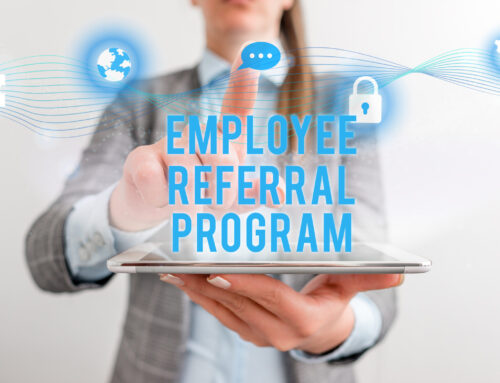How much does it cost to hire a new employee? Understanding all the costs involved in hiring hourly employees is crucial for any business. Many HR managers focus on the obvious expenses (salaries, job ads, etc.), but they often miss the hidden costs involved in other areas of the recruitment process.
At the end of the day, costs vary between businesses and job positions. However, there are common themes across all jobs, from background checks and pre-employment tests to onboarding materials and the time HR staff and managers spend on the hiring process.
Overlooking these costs can lead to budget issues and financial strain. It is important to be aware of and manage these hidden expenses – they are the key to effective workforce planning and keeping your business financially healthy.
Recruitment Costs
Recruitment costs are usually the first thing that pops into mind when you’re gearing up to hire new employees, but there’s more to it than just throwing up a job ad. These expenses can vary wildly depending on how you go about attracting candidates. Understanding these costs in detail will not only help you fine-tune your recruitment strategy but also ensure you get the most bang for your buck. Let’s dive into the various ways these costs can stack up and how you can keep them in check.
Job Advertisement Costs
Advertising job openings is a fundamental step in the recruitment process, and it can be a bit of a rollercoaster when it comes to costs. Depending on where and how you advertise, the expenses can vary significantly. Most businesses use a mix of online job boards, social media platforms, and traditional advertising methods to get the word out and reach potential candidates.
Online Job Boards: Posting on popular job sites like Indeed, LinkedIn, and ZipRecruiter is a common practice. These platforms offer different pricing models, such as pay-per-click, pay-per-post, or subscription-based plans. Costs can range from $150 to $500 per listing per month, depending on the site and the features included. Premium listings, which offer greater visibility, can increase these costs further.
Social Media Advertising: Leveraging social media platforms like Facebook, Instagram, and LinkedIn can also be an effective way to reach a broader audience. These platforms allow for targeted advertising, which can be cost-effective if done correctly. Campaign costs typically range from $50 to $200, depending on the duration and reach of the ad.
Traditional Advertising: Despite the rise of digital platforms, traditional methods such as local newspapers and community boards still play a role, especially in smaller communities. The costs for these ads can range from $100 to $300 per listing. While often more affordable, they may not reach as wide an audience as online methods.
Recruitment Agency Fees
Recruitment agencies can be a valuable resource for businesses looking to hire quickly and efficiently. However, these services come with their own set of costs that can significantly impact the overall hiring budget. Agencies typically charge fees based on the first-year salary of the new hire or a flat rate.
Percentage of First-Year Salary: This is the most common fee structure used by recruitment agencies. The agency charges a percentage of the new hire’s first-year salary, which generally ranges from 15% to 30%. For instance, if you hire an employee with a salary of $40,000, the agency fee could be between $6,000 and $10,000.
Flat Rate Fees: Some agencies offer a flat fee for their services, regardless of the position’s salary. This fee can range from $2,000 to $5,000 per hire, depending on the agency and the complexity of the role being filled. Flat rate fees can provide more predictable costs, but they might not always reflect the true market value for higher-paying roles.
Employee Referrals
Employee referral programs are one of the most cost-effective and efficient ways to find new hires. By incentivizing your current employees to refer potential candidates, you can tap into a network of pre-vetted, quality prospects who are more likely to fit into your company culture and stay long-term.
Flat Rate: Referral bonuses typically range from $250 to $2,000 per successful hire, but they can be higher for more specialized roles. These bonuses encourage employees to refer candidates who are a good fit, reducing the time and resources spent on traditional recruitment methods
Hourly Bonus: Refered offers an innovative hourly referral solution, making it easier for businesses to implement and manage referral programs. This platform helps streamline the referral process, track referrals, and ensure timely payouts, making the whole process efficient and user-friendly.
Pre-Hire Evaluation Costs
Before you make a hiring decision, evaluating candidates thoroughly is crucial. These evaluations help ensure you’re hiring someone with the right qualifications and a good fit for your company culture. Properly managing these costs is essential for making smart hiring decisions while staying within your budget.
Background checks
Background checks are a crucial part of the hiring process, ensuring that candidates are trustworthy and qualified. There are several types of background checks, including criminal, credit, and employment history. Criminal checks help identify any past legal issues, credit checks assess financial responsibility, and employment history verifies past job experiences. The costs for these checks can vary: criminal checks typically range from $20 to $100, credit checks cost between $20 and $50, and employment history checks are around $40 to $80 per candidate. Managing these costs effectively helps ensure you’re making informed hiring decisions without overspending
Pre-Employment Assessments
Skills tests: Skills tests are a great way to ensure candidates have the right abilities for the job. These tests can cover a range of areas, from technical skills to language proficiency and specific job-related tasks. They usually cost between $20 and $100 per test, depending on the type and complexity. Using skills tests helps you make sure candidates are truly qualified, leading to better hires and improved performance.
Personality assessments: Personality assessments help determine if a candidate will be a good fit for your company culture. These tests evaluate traits like teamwork, leadership, and problem-solving abilities. They typically cost between $30 and $200 per assessment, depending on the complexity and provider. Using personality assessments ensures you’re hiring individuals who not only have the right skills but also align with your company’s values and work environment.
Interviewing Costs
Interviewing candidates involves more than just sitting down for a chat. Costs can add up quickly, including logistics for in-person interviews and the time spent by HR staff and managers. These expenses are essential to understand and manage to keep your hiring process efficient and budget-friendly.
Interview Expenses: The costs of conducting interviews can vary based on whether they are in-person or virtual. In-person interviews often include travel, accommodation, and venue costs, which can range from $100 to $500 per candidate. Virtual interviews can help save you time and money – since 2020, virtually all companies have the ability to hold virtual interviews.
Interviewer’s time: Hiring new employees involves significant time and effort from HR staff and managers. Reviewing resumes, conducting interviews, and making decisions can add up to hidden labor costs. Typically, this time can translate to $500 to $2,000 per hire, considering the salaries of those involved. Additionally, there’s an opportunity cost; time spent on hiring is time taken away from other important tasks and projects. Efficiently managing this time is crucial to maintaining productivity and keeping overall costs down.
Onboarding Costs
Onboarding new employees involves several costs, from administrative tasks to training programs. These expenses can include paperwork processing, setting up systems, providing training, and creating onboarding materials like welcome kits and handbooks.
Administrative Costs: Administrative costs are a significant part of the hiring process, covering tasks like processing paperwork and setting up new employees in company systems. These costs can range from $100 to $500 per hire, depending on the complexity and volume of the tasks involved.
Initial Training Programs: Initial training programs are essential for getting new hires up to speed and integrated into their roles. These programs can include job-specific training, compliance courses, and orientation sessions. The costs for initial training typically range from $500 to $1,000 per employee.
Ongoing training and development: Ongoing training and development are crucial for keeping employees’ skills up-to-date and ensuring continuous improvement. These programs can include advanced training courses, professional development workshops, and certifications. The costs for ongoing training typically range from $300 to $1,000 per employee per year, depending on the frequency and type of training provided. Investing in ongoing development helps maintain a highly skilled workforce and can improve employee retention and job satisfaction.
Onboarding Materials: Onboarding materials are essential for welcoming new employees and providing them with the information they need to succeed. Costs include welcome kits, which typically range from $50 to $200 per kit, and cover items like company-branded merchandise and basic office supplies. Additionally, creating and distributing employee handbooks and training manuals can cost between $30 and $100 per set. These materials ensure that new hires feel welcomed and are well-informed about company policies and procedures.
Turnover: the Hidden Cost
Turnover can be a hidden expense that significantly boosts hiring costs. When an employee leaves, the expenses for recruiting, hiring, and training a new person add up quickly. Additionally, new employees often take between 8 to 26 weeks to reach full productivity, leading to temporary efficiency losses. Frequent turnover also disrupts team cohesion and affects the overall cultural fit, which can further impact productivity. By ensuring a good cultural fit and focusing on employee retention, you can reduce these hidden costs and maintain a more stable, productive workforce.
The Bottom Line
The costs of hiring hourly employees can add up to much more than you might realize. From job advertisements and recruitment fees to pre-hire evaluations, interviews, and onboarding, the expenses can quickly escalate. Based on our detailed breakdown, the total cost of hiring one hourly employee can range from $3,000 to $7,000 or more, depending on the specific circumstances and methods used.
These costs quickly add up, often exceeding initial expectations and straining budgets. You are likely spending more on hiring than you realize. However, there’s a solution: Refered. Our platform simplifies the referral process, tracks expenses, and ensures timely payouts, helping you save money while attracting top talent. With Refered, you can build a more stable, productive workforce and keep your business financially healthy.
Investing in Refered can help you streamline your recruitment efforts, reduce turnover, and ultimately lower the hidden costs associated with hiring. Don’t let these expenses catch you off guard—take control of your hiring budget and make smarter decisions with Refered.
How Much Does It Cost to Hire: Final Words
Hiring hourly employees involves a range of costs beyond just salaries and job ads. These include recruitment fees, background checks, skills tests, interviews, and onboarding, which can add up to $3,000 to $7,000 or more per hire. Many businesses are likely spending more than they realize. Using Refered can help streamline the hiring process, manage expenses, and attract top talent more efficiently, ultimately saving money and improving workforce stability.








